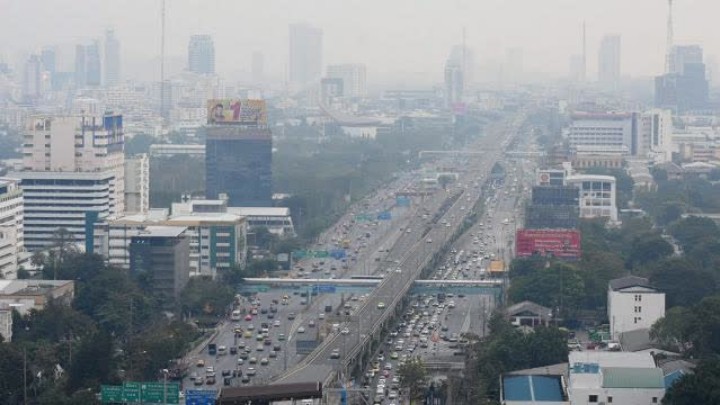
The Ministry of Natural Resources and the Environment has reported that data from 2020 has confirmed that smog and burning were the key causes of critical Particulate Matter 2.5 or PM 2.5 levels across Thailand.
PM 2.5 levels exceeded limits on 32 days of the year in Bangkok in 2020, mostly at the start of December, when Bangkok rose to third in the world for air pollution. The main cause in the city was smog.
In the north, PM 2.5 levels broke through limits on 112 days in the past four years, mostly during the February to April period. Wiang Pang Kam sub-district of Mae Sai district in Chiang Rai was one of the worst impacted locations, seeing PM 2.5 levels of 366 micrograms per cubic meter, or seven times the limit of 50 micrograms per cubic meter and posing a serious health threat.
Assistant Abbot of Wat Phra Singha in Chiang Rai, Phra Maha Wuthichai Wachiramethee, has launched a campaign to raise awareness of the problem among residents of the province and spread understanding that the major issue of smog is a direct result of human activity. The campaign will seek to encourage people to report slash and burn farming or forest fires, and replace practices that involve burning with traditional and organic activities such as composting.
The Department of Environmental Quality Promotion is similarly campaigning for Thais to “Stop All Burning” and turn to clean energy, while properly maintaining vehicles to avoid contributing to smog. It is also urging citizens to use public transport instead of private vehicles, to plant trees around their homes and to contribute to reducing PM 2.5 (NNT)





